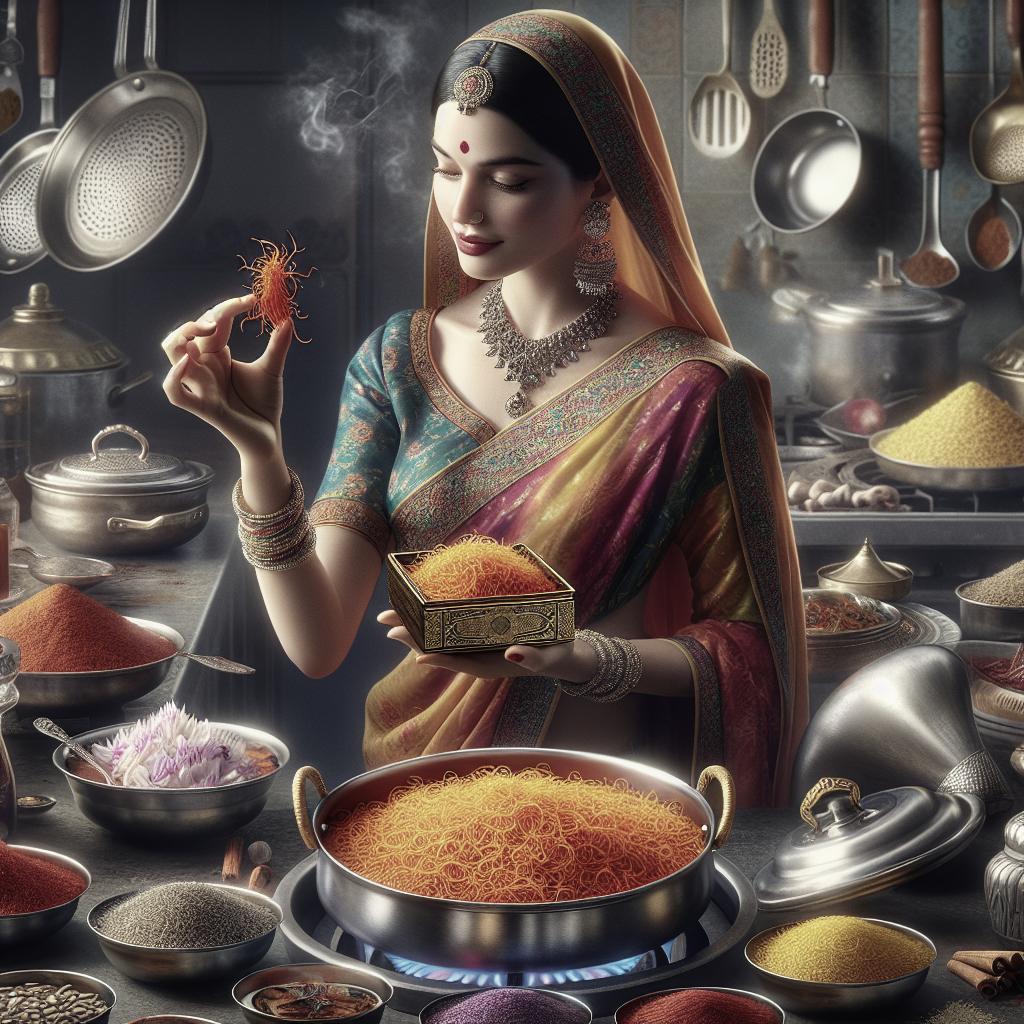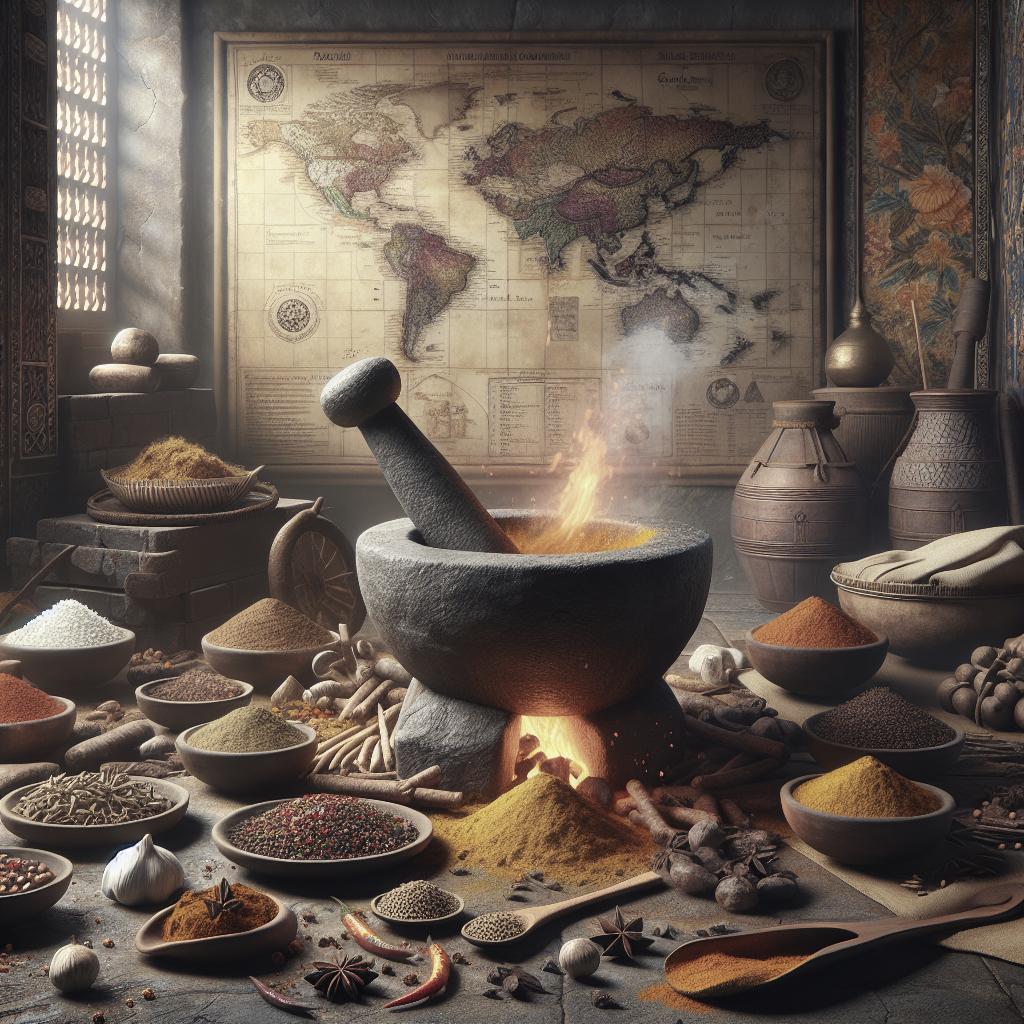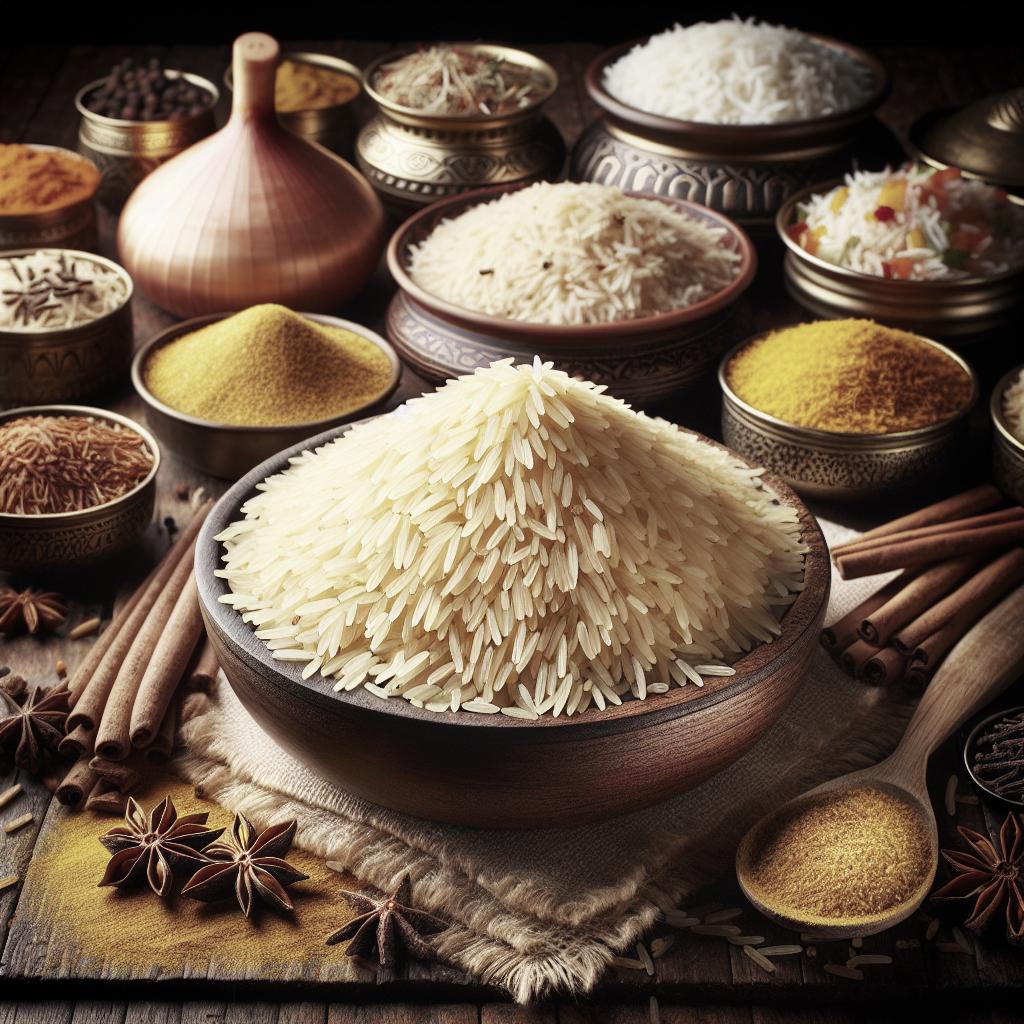“`html
How to Use Saffron in Indian Cooking
Saffron, the world’s most expensive spice, holds a revered place in Indian cuisine, infusing dishes with its unique aroma, vibrant color, and distinct flavor. Known as ‘Kesar’ in India, this spice adds an exotic touch to a variety of recipes, from fragrant saffron rice to creamy rich desserts like ‘Kesar Kulfi’. In this blog post, we will explore the quintessential uses of saffron in Indian cooking, providing you with the essential ingredients, step-by-step directions, and nutrition facts for creating delectable saffron-infused dishes at home. Dive into the world of saffron and discover how this luxurious spice can transform your culinary creations into exquisite expressions of flavor.
Ingredients
To create a traditional Indian saffron dish like saffron rice, it is essential to gather fresh and quality ingredients. High-quality saffron threads, preferably Kashmiri or Iranian, are necessary to achieve the authentic flavor and vibrant yellow hue. Alongside saffron, you’ll need basmati rice renowned for its aromatic quality and long grains. Ghee or clarified butter is used to enrich the dish with its nutty depth, along with whole spices like cinnamon, cloves, and bay leaves to enhance the aroma.
Additional ingredients include onions, which provide a mild sweetness, and cashews or almonds for an added layer of texture and richness. Don’t forget the salt and sugar, which balance the flavors beautifully. Finally, a few strands of saffron soaked in warm milk will be needed to release its natural color and fragrance. These simple yet carefully chosen ingredients combine to create the complexity and depth characteristic of Indian saffron dishes.
Directions
Start by rinsing the basmati rice under cold water to remove excess starch, and then soak it in water for about 30 minutes. Meanwhile, warm a small amount of milk and add a few saffron strands to release their color and aroma. In a heavy-based pan, heat the ghee and add the whole spices to fry until they release their fragrance. Add sliced onions to the pan and sauté until lightly golden.
Drain the soaked rice and add it to the pan, stirring gently to coat the grains with the spice-infused ghee. Pour in water and bring the mixture to a boil, adding salt and a touch of sugar for flavor. Reduce the heat, cover the pan, and let simmer until the rice absorbs all the liquid. Finally, sprinkle the saffron-infused milk over the rice, allowing its rich hue to color the dish. Let the rice sit covered for a few minutes before fluffing with a fork and garnishing with nuts if desired.
Nutrition Facts (per serving)
When incorporating saffron in Indian cooking, it’s important to be aware of its nutritional benefits. A serving of saffron rice is not only a feast for the senses but also a healthy choice. Saffron is known for its antioxidant properties, which can support a healthy immune system. Additionally, the use of nuts such as almonds or cashews adds healthy fats and a good amount of protein.
Basmati rice is lower in calories compared to other rice varieties and provides a moderate amount of carbohydrates for energy. Ghee, although high in fat, offers fat-soluble vitamins such as vitamin A and E in addition to gentle anti-inflammatory properties. Overall, saffron rice is a nutrient-rich accompaniment that complements main courses exquisitely, offering a balance of flavors and beneficial nutrients.
Photos of Indian Saffron Rice
Capturing the rich and alluring colors of saffron rice is as delectable as tasting the dish itself. The golden strands of saffron weaving through soft, fluffy grains of rice create a visual masterpiece. Photography plays a crucial role in illustrating the beauty of this traditional dish to your audience, making it not only enticing to taste but also captivating to the eyes.
To achieve the best photographs of saffron rice, having natural lighting is essential to highlight the vivid hues and textures. Use a clean and minimalistic background to keep the focus on the dish, capturing angles that show off the plump grains and nutty garnishes. Including elements like saffron strands or a pinch of spices in the frame can add context and enhance the storytelling of your photograph.
Next Steps
| Section | Content Overview |
|---|---|
| Ingredients | Essential ingredients for preparing saffron rice and other Indian saffron dishes, focusing on quality saffron and basmati rice. |
| Directions | Step-by-step guide to preparing saffron rice, from soaking rice to garnishing the final dish. |
| Nutrition Facts (per serving) | Nutritional benefits of saffron and other ingredients used in saffron rice, including antioxidant and energy-giving properties. |
| Photos of Indian Saffron Rice | Tips for photographing saffron rice, emphasizing natural lighting and showcasing the dish’s visual appeal. |
“`


